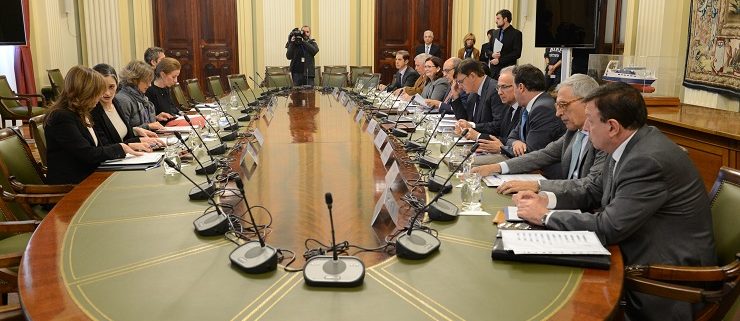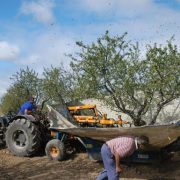Spain: hydrographic confederations coordinate to anticipate possible drought scenarios
The drought has focused a coordination meeting between the different Hydrographic Confederations, chaired by the Minister of Agriculture and Fisheries, Food and Environment, Isabel García Tejerina and held at MAPAMA headquarters. The meeting has served to take stock of all the measures adopted since 2015, when the drought situation in the Júcar and Segura basins was decreed; to assess the application of the drought plans in all the basins; and analyze the answers to the possible scenarios, which allow serving the population in all of them.
The meeting was attended by the presidents of all the CC.HH. dependent on MAPAMA, as well as that of the Commonwealth of the Taibilla Canals. On behalf of the Ministry, in addition to the Minister, the Secretary of State for the Environment, María García; and the General Director of Water, Liana Ardiles.
The meeting took place after one month of October, beginning of the hydrological year, in which the accumulated rainfall was 25.6 mm, which represents 66.3% less than its normal value
This, after a hydrological year October 2016 – September 2017 that ended with a precipitation deficit of 14% with respect to the normal value corresponding to that period.
The meteorological drought and the scarcity of reserves have been maintained since 2015 in basins such as the Júcar and Segura basins. In them, and in the Duero, the approved Royal Decrees of Drought have allowed to act and mobilize resources to minimize the affections to the population. In all the other basins, the same monitoring has been carried out, in compliance with the drought plans in force since 2007.
In addition to the Royal Decrees, emergency works have been carried out in the basins of Júcar and Segura, which amount to 28 actions so far, for an amount of more than 83 million euros
With them, they have been able to mobilize an additional 350 hm3 of water, which has served to meet the needs of the population and also the agricultural sector.
In the same way, other measures have been adopted, such as a Royal Decree Law that includes the exemption from water use fees and charges, together with another battery of measures such as financing aid, acceleration of agricultural insurance charges or exemptions. fiscal.
At the meeting, the Confederations have detailed other actions carried out in recent months, ranging from experiences of self-regulation, to awareness campaigns for society.
Coordination to anticipate
During the hydrological year recently started, the monitoring of the indicators of the drought plans will continue, and the battery of measures that allow such plans will be set in motion, as well as the Royal Drought Decrees. The actions associated with the putting into operation of the drought wells will be included in these actions, among others; or a more efficient use of desalinated water (improving the regulation of channels, extending existing connections, or expanding transport capacity).
The possible scenarios in this hydrological year recommend a close coordination between the CC.HH. In addition, communication with users will be intensified, through the bodies provided in the different demarcations, and in accordance with the Water Law
In this way, with maximum transparency and realistic planning, users will be able to make the most appropriate decisions.
In addition, the importance of a close collaboration with the regional and local administrations has been highlighted, so that those that have competencies in the supply elaborate the emergency plans and adapt existing ones to the current context of drought. In short, it is about ensuring consistency in the definition of drought prevention and management measures, which correspond to the different public administrations.
Source: MAPAMA
















